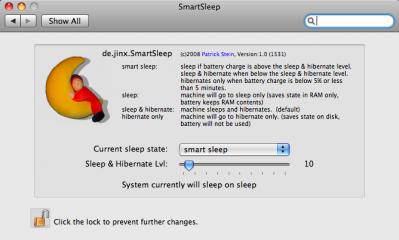iMovie '09: Speed Clips up to 2,000%
iMovie '09 brings back the capability to speed up or slow down clips, which went missing in iMovie '08. Select a clip and bring up the Clip Inspector by double-clicking the clip, clicking the Inspector button on the toolbar, or pressing the I key. Just as with its last appearance in iMovie HD 6, you can move a slider to make the video play back slower or faster (indicated by a turtle or hare icon).
You can also enter a value into the text field to the right of the slider, and this is where things get interesting. You're not limited to the tick mark values on the slider, so you can set the speed to be 118% of normal if you want. The field below that tells you the clip's changed duration.
But you can also exceed the boundaries of the speed slider. Enter any number between 5% and 2000%, then click Done.
Written by
Jeff Carlson
Recent TidBITS Talk Discussions
- Alternatives to MobileMe for syncing calendars between iPad/Mac (1 message)
- Free anti-virus for the Mac (20 messages)
- iTunes 10 syncing iPod Touch 4.1 (2 messages)
- Thoughts about Ping (16 messages)
Related Articles
- Unwanted App Launch Problem Solved, No Thanks to Apple (16 Mar 08)
- Safe Sleep Revisited (20 Aug 07)
- Stewing Over Safe Sleep (30 Jul 07)
Published in TidBITS 919.
Subscribe to our weekly email edition.
- Apple Releases 802.11n AirPort Express
- AT&T Offers Unlimited Voice Use iPhone Plan
- Apple Releases Updated AirPort Utility for Tiger, Leopard, Windows
- DealBITS Drawing: Win a Copy of IPNetMonitorX
- Updated Paste Plain Text AppleScript for Word 2008
- Automating Text-to-Speech Video Narration
- Vista Woes Aired in Internal Microsoft Email
- Take Control News: Updated Help for Switching to the Mac
- Important Updates Released for Office 2008 and 2004
- Bedding Down with a MacBook Air
- TidBITS Watchlist: Notable Software Updates for 17-Mar-08
- Hot Topics in TidBITS Talk/17-Mar-08
SmartSleep Solves Safe Sleep Situation
Several months ago I complained in "Stewing Over Safe Sleep" (2007-07-30) that my laptop took far too long to go to sleep, thanks to Apple's default Safe Sleep settings; I also shared a shell script that I used to disable Safe Sleep and return my computer to a more sane state. After quite a bit of reader feedback, I followed that up a month later with "Safe Sleep Revisited" (2007-08-20), in which I presented a more sophisticated script that turns Safe Sleep on or off dynamically based on your current battery level. But I still felt it was a shame that it required command-line fiddling to achieve the sort of behavior I wanted.
Now, thanks to a free preference pane by Patrick Stein called SmartSleep, those of us with Mac laptops that sleep in what we regard as the "wrong" way can tailor sleep settings to our liking with just a couple of clicks. SmartSleep lets you choose exactly what happens when you put your computer to sleep. The default behavior ("sleep & hibernate") is to save your computer's RAM to disk before sleeping - that's what I dislike because it takes too long, though it lets your Mac recover almost instantly from a complete loss of power. You can also choose "sleep" (the default on earlier Mac laptops) which sleeps immediately without copying RAM to disk; "hibernate," which saves the RAM and then powers down completely when the computer sleeps; and my favorite, "smart sleep," which dynamically turns "hibernate and sleep" mode on or off depending on your battery's current charge (the threshold is adjustable with a slider), and goes straight to "hibernate" only when your battery's charge is less than 5 percent. In other words, the "smart sleep" setting goes a step further than my script did, and with a lot less effort. There's even a button to delete your sleepimage file, if any.
One tip: if you double-click the preference pane file to install it, Mac OS X asks whether you want to install it for all users, or just the current user. You must select Install for All Users of This Computer, which puts the file in /Library/PreferencePanes - the only location in which it works properly.
 CrashPlan is easy, secure backup that works everywhere. Back up
CrashPlan is easy, secure backup that works everywhere. Back upto your own drives, computers, and online with unlimited storage.
With unlimited online backup, this is one resolution you can keep.
Back Up Your Life Today! <http://crashplan.com/ref/tidbits.html>


